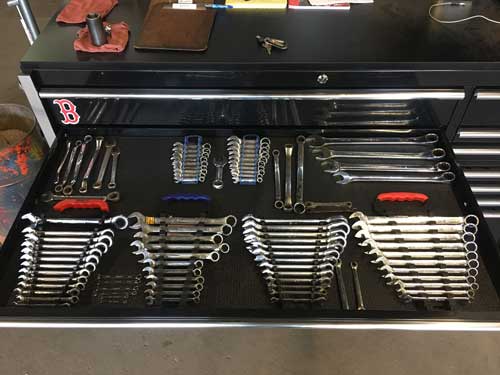
When tools are exposed to moisture, damage can occur in the form of rusting or corrosion. In the case of electric tools moisture can increase the risk of electric shocks when used. Even when stored in a secure plastic tool box, equipment can be exposed to moisture and damp. Condensation can create moist conditions inside the box or rain can get into the box in wet weather. However, you can waterproof and damp-proof your plastic tool box with some simple solutions.
Moisture absorbents
To prevent condensation affecting your tools while the box is resting in a shed or garage, desiccants or moisture absorbers can be placed inside the sealed box. Desiccants like silica gel crystals absorb moisture from the air to keep items rust and mould free. Blackboard chalk placed inside the plastic tool box also helps absorb excess moisture if changed every few months.
Self-adhesive seal
For plastic tool boxes that do not already have a seal around the interior of the lid, you can insert a seal yourself to help keep your tools dry. Self-adhesive weather seal, which retains its shape in sub-zero temperatures, is one solution.
Toolbox seal
Dust and waterproof rubber seal is sold specifically for toolboxes as Toolbox Seal; however, any waterproofing seal is suitable. Seal is generally constructed from closed cell polymer foam, polypropylene bulky yarns and polypropylene filament.
Felt seals and tube adhesive
Another variation is felt toolbox seals which work together with weatherstrip adhesive. This adhesive is fully weatherproof as well as being resistant to petrol, kerosine, antifreeze and solvents. Weatherstrip adhesive comes in different formulas according to the substance being adhered, so if you are using rubber seals, use the black version which is formulated specifically for ethylene propylene diene M-class rubber (EPDM).
Self-Adhesive Round Rubber Seals and D-Shaped Weather Stripping
These seals work by creating a moisture barrier and an airtight seal between the round seal and the surface it is adhered to. The custom-formulated EPDM sponge rubber compound is resistant to absorption of water, UV rays and low temperatures. The seals self-adhere to the surface with either BT or HT tape. BT tape also acts as a shock absorber and the HT tape. HT tape is for more general purpose or static applications, so BT will be more suitable for a tool box.
IP rating locks
If you have trouble with your plastic toolbox leaking, changing the latches can help prevent this. Look for locks that rate highly for ingress protection (IP) to replace your current set. IP ratings reflect the level of resistance to water, dust or physical protuberance into the tool box. Keeping the latches in good order with regular applications of lubricant such as WD40 will help maintain their functionality.
Applying a waterproofing solution to your plastic tool box will ensure that your tools remain rust and corrosion free, and power tools retain their safety levels. Alternatively, you can ask your toolbox expert about purchasing a fully waterproof tool box.
If you’re looking for a range of toolbox options, check out RS components today and find one that suits your needs.